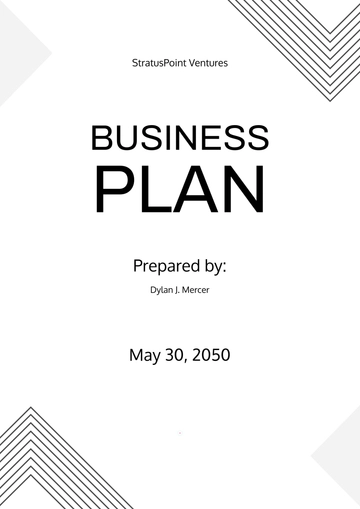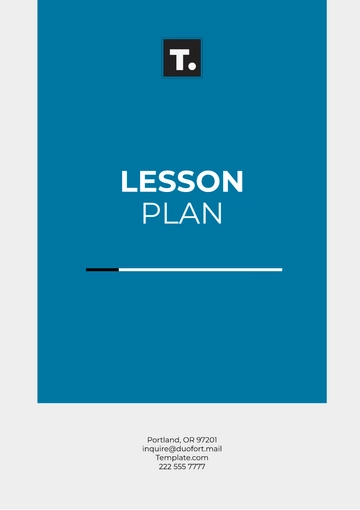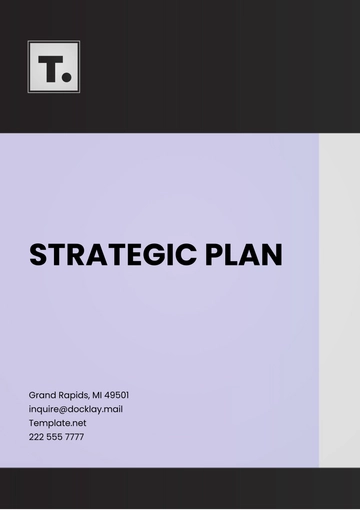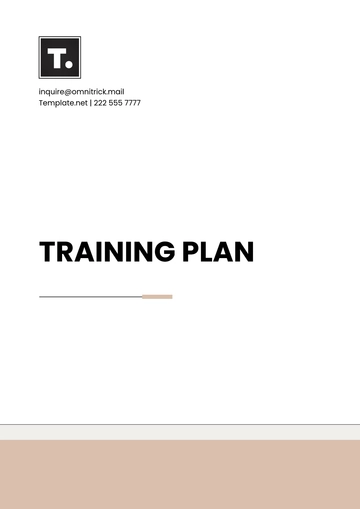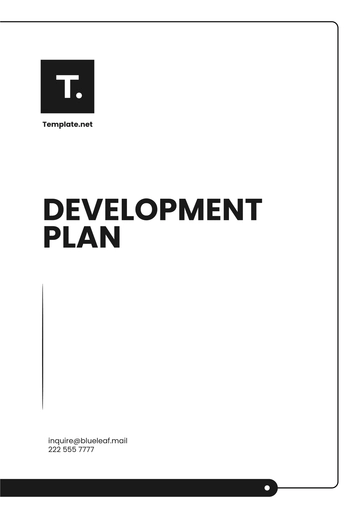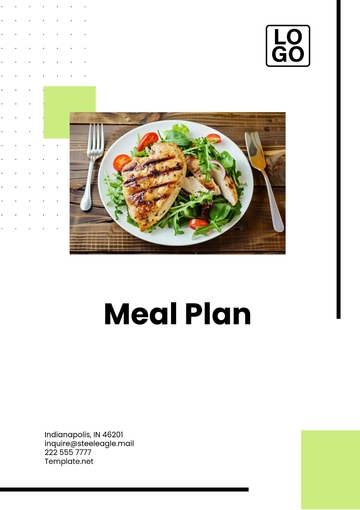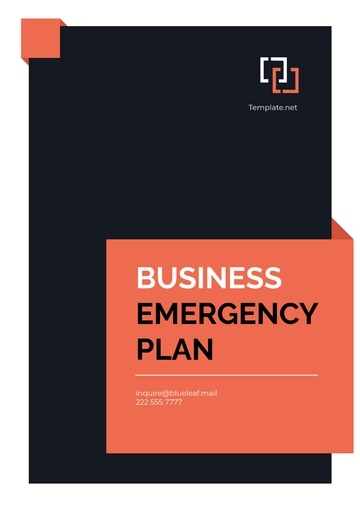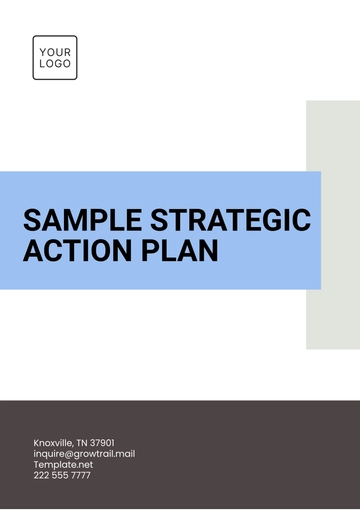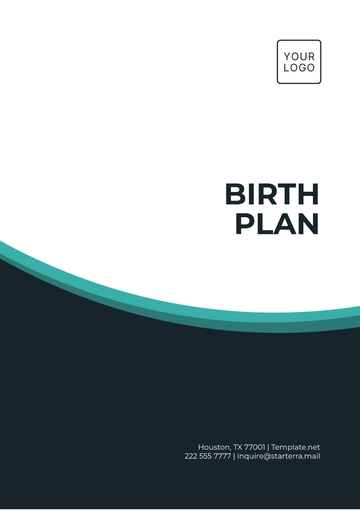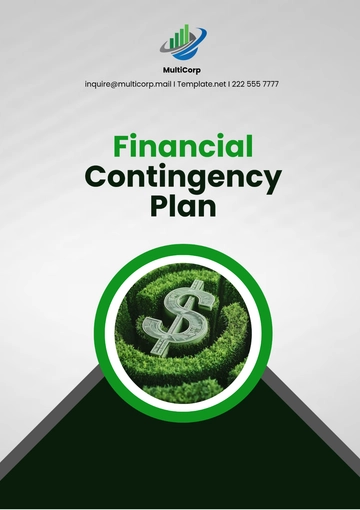Free Email Marketing Yearly Email Strategy Plan
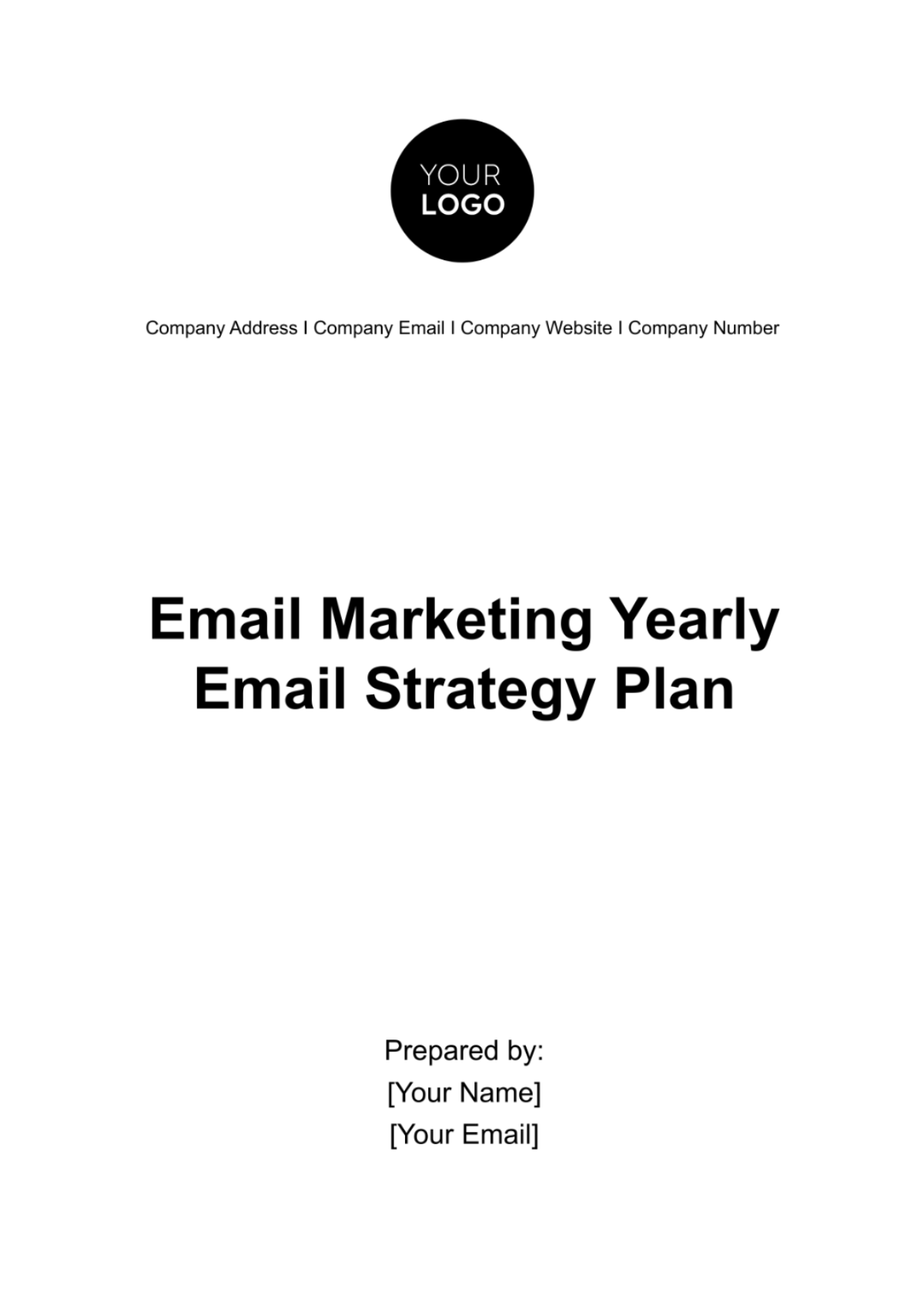
Executive Summary
This comprehensive email marketing plan serves as a strategic blueprint for [Your Company Name]'s outreach efforts spanning from [Month Day, Year] through to [Month Day, Year]. Our primary aim is to forge meaningful connections with both our existing customer base and potential prospects. To do so, this document delineates a multi-faceted approach encompassing targeting strategies, budget allocation, content creation, key performance indicators (KPIs), and legal compliance measures.
We begin with clearly defined objectives that set the stage for the upcoming year. These objectives range from augmenting our subscriber base and achieving stellar open and click-through rates to driving sales conversions specifically through the email channel. Each objective is accompanied by corresponding KPIs to provide measurable outcomes that will be diligently tracked.
Audience targeting plays a crucial role in the plan's efficacy. We have identified several customer segments that will receive tailored messaging to maximize engagement and conversions. These segments include existing customers, new subscribers, cart abandoners, high-value customers, and audiences segmented by geographical location.
Recognizing that a well-executed plan requires adequate resources, we have outlined a budget that encompasses subscriptions for email platforms, content creation, and analytics tools. Each item is assigned to specialized teams or individuals responsible for their respective domains.
Content is the linchpin of this strategy, and a detailed content calendar is incorporated to streamline the planning and execution process. The calendar specifies the campaign names, objectives, target audiences, email formats, and the send dates.
Lastly, compliance with laws such as GDPR and the CAN-SPAM Act is non-negotiable to maintain our brand's credibility and avoid legal repercussions. Through meticulous planning and a focus on ROI, this email marketing plan aims to not only achieve but surpass our marketing objectives for the year [Year].
Objectives
The objectives section serves as the cornerstone of our email marketing strategy, laying down the specific goals that we aim to achieve within [Year]. The objectives are formulated to align with [Your Company Name]'s overarching business goals, thereby ensuring that the email marketing initiatives are synergistic with the broader organizational strategies. Each objective is accompanied by relevant Key Performance Indicators (KPIs) to provide measurable criteria for success, along with target dates to instill a sense of urgency and focus.
Below is a detailed elaboration of each objective:
Key Performance Indicators (KPIs) | Target Date |
Number of new subscribers | June 30, 2050 |
Open rate percentage | |
Click-through rate percentage | |
Conversion rate, revenue generated |
A. Objective 1: Increase Subscriber Base by [00]%
KPIs: Number of new subscribers
Target Date: [Month Day, Year]
Expanding our email subscriber base is pivotal to ensuring a wider reach for our campaigns. The goal is to increase the subscriber base by [00]% by mid-year. Strategies will include but not be limited to lead magnets, subscription forms on the website, and co-marketing initiatives.
B. Objective 2: Achieve [00]% Open Rate
KPIs: Open rate percentage
Target Date: Ongoing
Our open rate serves as a barometer of how engaging our email subject lines and preheader texts are. A [00]% open rate is an ambitious yet achievable target. Tactics to improve open rates will involve A/B testing of subject lines, personalization, and sending emails at optimized times.
C. Objective 3: Achieve [00]% Click-Through Rate
KPIs: Click-through rate percentage
Target Date: Ongoing
Click-through rate (CTR) is indicative of how compelling our email content and call-to-action (CTA) buttons are. By setting a goal of [00]%, we aim to ensure that our email content is not just read, but also acted upon. Strategies include compelling CTAs, relevant content linking, and segmented targeting.
D. Objective 4: Increase Sales through Email Channel by [00]%
KPIs: Conversion rate, revenue generated
Target Date: [Month Day, Year]
Sales conversion through the email channel is the ultimate yardstick of our campaign's success. By year-end, we aim to achieve a [00]% increase in sales attributed to email marketing. To accomplish this, we'll employ strategies such as cart abandonment emails, special offers, and leveraging customer behavior analytics to send targeted communications.
By establishing these objectives and assigning quantifiable KPIs and target dates, we create a structured roadmap for the email marketing activities planned for the year. This will not only guide our execution but also provide benchmarks for performance evaluation.
Audience Targeting
Audience targeting is an essential component of our email marketing strategy, enabling us to deliver highly relevant and personalized content to our diverse subscriber base. By employing a well-crafted segmentation strategy, we aim to achieve better open rates, click-through rates, and conversion rates, thereby optimizing the return on investment (ROI) for our email campaigns. This section outlines the different audience segments that we plan to focus on and provides a rationale for each.
Existing Customers. Focusing on existing customers offers an opportunity to nurture long-term relationships and encourage repeat business. These individuals are already familiar with [Your Company Name]'s products or services, reducing the barrier to conversion. Emails to this segment will include loyalty programs, product updates, and personalized recommendations based on past purchasing behavior.
New Subscribers. New subscribers represent untapped potential and are often more engaged, providing us with an opportunity to make a strong first impression. Welcome emails, onboarding series, and exclusive first-time offers are strategies to engage this segment effectively. The idea is to guide them through the customer journey, introducing them to the brand ethos, product portfolio, and value proposition.
Cart Abandoners. Abandoned carts represent missed revenue opportunities. By specifically targeting cart abandoners, we can employ strategies like reminder emails, discount offers, or free shipping to incentivize completion of the purchase. Timely and persuasive emails can often recover a significant portion of these potentially lost sales.
High-Value Customers. High-value customers are those who have shown a history of frequent purchases or higher-than-average order values. They are most likely to become brand advocates and deserve specialized attention. Emails to this segment could include early access to new products, special VIP offers, and personalized "Thank You" messages to let them know their business is highly valued.
Geographic Location. Geographic segmentation allows us to tailor our emails based on location-specific events, holidays, or cultural preferences. This can be particularly effective for businesses with a global audience or multiple physical locations. By sending geographically relevant content, we enhance the customer's experience and increase the likelihood of engagement and conversions.
In sum, a nuanced approach to audience targeting will enable us to send the right message to the right people at the right time. By segmenting our email list into these distinct categories, we can design more focused and effective campaigns that resonate with each group's unique needs and preferences.
Budget and Resources
A well-executed email marketing strategy requires not only strategic insight but also financial investment and human resources. Therefore, a carefully planned budget is indispensable for ensuring that we have the necessary tools and manpower to execute our strategy effectively. This section outlines the estimated costs associated with different facets of our email marketing plan, along with the teams or individuals assigned to manage them. A transparent budget will serve as a financial roadmap for the year, helping us allocate resources wisely and measure ROI more accurately.
Item | Cost | Assigned Team/Individual | Sample Content |
Email Platform Subscription | $2,000 | Marketing Team | This cost covers our annual subscription to [Your Email Platform]. Features such as automation, list segmentation, and analytics are included in this package. |
Content Creation | |||
Testing and Analytics Tools | |||
Total | $[0,000] | ||
Assigning specific costs to each component and designating responsibility to particular teams or individuals ensures that every part of our email marketing strategy is accountable. Regular reviews will be conducted to assess whether the allocated budget is being used efficiently and effectively, with adjustments made as needed to address any challenges or opportunities that arise during the year.
Email Content Calendar
Effective email marketing demands meticulous planning and scheduling, which is why an email content calendar is indispensable. This calendar provides a structured framework that outlines the month-by-month plan for our email campaigns, including the campaign names, objectives, target audiences, email formats, and specific send dates. This organized approach enables us to allocate resources better, avoid last-minute rushes, and align our campaigns with seasonal trends, holidays, and company milestones. The content calendar also fosters team alignment by laying out the roadmap for the entire year.
Month | Campaign Name | Objective | Target Audience | Email Format | Send Date |
January | New Year Sale | Increase sales | Existing Customers | Promotional | Jan 15, 2050 |
February | |||||
March | |||||
April | |||||
May | |||||
June | |||||
July | |||||
August | |||||
September | |||||
October | |||||
November | |||||
December |
By laying out this comprehensive email content calendar, we can stay ahead of the curve in terms of planning, content creation, and execution. This proactive approach also allows us to tweak strategies and make adjustments as needed based on performance data from earlier campaigns, thereby ensuring that we are continually optimizing for success throughout the year.
Tracking and Measurement Metrics
Accurate tracking and measurement are crucial for understanding the effectiveness of our email marketing strategy. Metrics offer insights into audience behavior, campaign performance, and return on investment (ROI). By consistently monitoring these KPIs, we can make informed decisions, iterate on our strategies, and continually optimize our email marketing efforts for greater impact. Below are key metrics we'll be tracking and what each of them signifies.
Open Rate. The open rate indicates the percentage of recipients who have opened the email. This is a primary metric for assessing how well our subject lines and initial messaging are performing. A high open rate generally signifies that our emails are capturing attention, while a low rate could indicate that our emails are not appealing or are getting lost in the inbox. Monitoring open rates can help us fine-tune our subject lines and timing to improve visibility and engagement.
Click-Through Rate (CTR). Click-through rate measures the percentage of email recipients who click on one or more links contained in an email. This metric helps us understand how effectively the email content encourages action. A high CTR is usually a sign that the email’s content is relevant and compelling to the reader, while a low CTR may indicate that the content is not engaging or that the call-to-action is unclear. Tweaking the email layout, content, and calls-to-action based on CTR can significantly influence subsequent user engagement.
Conversion Rate. The conversion rate measures the percentage of email recipients who complete the desired action after clicking on a link in an email, such as making a purchase or filling out a form. This is the ultimate metric of an email's effectiveness in driving business objectives. A high conversion rate signifies that not only is the email content relevant, but it also successfully guides the user through the funnel towards a valuable action.
Bounce Rate. Bounce rate represents the percentage of emails that could not be delivered to the recipient's inbox. A high bounce rate can negatively impact email deliverability and could signal issues like outdated email lists or server reputation problems. Differentiating between hard bounces (permanent failure due to invalid email addresses) and soft bounces (temporary failure due to server issues) can help us make necessary adjustments to our email list and delivery strategies.
Unsubscribe Rate. The unsubscribe rate is the percentage of recipients who opt-out of your email list after receiving an email. A high unsubscribe rate can be a red flag, indicating that the content is not meeting the expectations of the audience or that the frequency of emails might be overwhelming. It's crucial to scrutinize this metric in conjunction with other metrics like open rate and conversion rate to get a holistic view of campaign performance and audience satisfaction.
By closely tracking these key performance indicators, we can obtain a nuanced understanding of our email marketing strategy's strengths and weaknesses. This information allows us to iterate and improve continually, ensuring that we are effectively reaching our target audiences and achieving our objectives.
Testing and Optimization
In the ever-evolving landscape of email marketing, what works today may not be as effective tomorrow. That's why continuous testing and optimization are integral to our strategy. By employing a systematic approach to testing different variables, we aim to glean actionable insights that will help us fine-tune our campaigns for higher engagement and conversions.
Element to Test | Hypothesis | Metrics to Measure | Test Date |
Subject Line | Personalization increases open rates | Open rate | March 1, 2050 |
Compliance
In today's digital environment, compliance with legal regulations is not merely an obligation but a cornerstone of trust and reputation management. Adhering to these rules is not just about avoiding penalties, but also about building and maintaining a respectful and transparent relationship with our subscribers. By laying out our compliance strategy, we aim to ensure that every email sent aligns with best practices and legal requirements, thereby protecting both our company and the recipients of our emails.
GDPR Compliance
CAN-SPAM Act
[Your Country's Email Laws]
Review and Analysis Plan
Effective email marketing is a dynamic process that requires periodic review and analysis to gauge performance and identify opportunities for improvement. This chapter outlines our approach to evaluating the success of our email marketing campaigns, both during the year and at its conclusion. It includes plans for quarterly performance reviews to track real-time progress, an end-of-year ROI analysis to measure the financial impact, and a pivotal stakeholder meeting scheduled for [Month Day, Year], where key performance indicators will be reviewed and strategies for the following year will be discussed.
Quarterly performance reviews
End-of-year ROI analysis
Stakeholder meeting to review KPIs and discuss the next year's plan: [Month Day, Year]
Appendices (Attachments)
[A/B Test Results]
[Customer Testimonials]
[Additional Data]
For questions or clarifications, please contact [Your Name, Position] at [Your Contact Details].
Document Prepared By:
[Your Name]
[Your Position]
[Your Company Number]
Approval By:
[Approver's Name]
[Approver's Position]
Date: [Approval Date]
This document is intended for internal use by [Your Company Name]. Unauthorized distribution is prohibited.
- 100% Customizable, free editor
- Access 1 Million+ Templates, photo’s & graphics
- Download or share as a template
- Click and replace photos, graphics, text, backgrounds
- Resize, crop, AI write & more
- Access advanced editor
Transform your email marketing game with the Email Marketing Yearly Email Strategy Plan Template, exclusively from Template.net. Crafted for success, this editable and customizable template allows you to tailor your yearly email strategy effortlessly. Utilize our Ai Editor Tool for seamless edits, ensuring your email campaigns shine with precision and impact.
You may also like
- Finance Plan
- Construction Plan
- Sales Plan
- Development Plan
- Career Plan
- Budget Plan
- HR Plan
- Education Plan
- Transition Plan
- Work Plan
- Training Plan
- Communication Plan
- Operation Plan
- Health And Safety Plan
- Strategy Plan
- Professional Development Plan
- Advertising Plan
- Risk Management Plan
- Restaurant Plan
- School Plan
- Nursing Home Patient Care Plan
- Nursing Care Plan
- Plan Event
- Startup Plan
- Social Media Plan
- Staffing Plan
- Annual Plan
- Content Plan
- Payment Plan
- Implementation Plan
- Hotel Plan
- Workout Plan
- Accounting Plan
- Campaign Plan
- Essay Plan
- 30 60 90 Day Plan
- Research Plan
- Recruitment Plan
- 90 Day Plan
- Quarterly Plan
- Emergency Plan
- 5 Year Plan
- Gym Plan
- Personal Plan
- IT and Software Plan
- Treatment Plan
- Real Estate Plan
- Law Firm Plan
- Healthcare Plan
- Improvement Plan
- Media Plan
- 5 Year Business Plan
- Learning Plan
- Marketing Campaign Plan
- Travel Agency Plan
- Cleaning Services Plan
- Interior Design Plan
- Performance Plan
- PR Plan
- Birth Plan
- Life Plan
- SEO Plan
- Disaster Recovery Plan
- Continuity Plan
- Launch Plan
- Legal Plan
- Behavior Plan
- Performance Improvement Plan
- Salon Plan
- Security Plan
- Security Management Plan
- Employee Development Plan
- Quality Plan
- Service Improvement Plan
- Growth Plan
- Incident Response Plan
- Basketball Plan
- Emergency Action Plan
- Product Launch Plan
- Spa Plan
- Employee Training Plan
- Data Analysis Plan
- Employee Action Plan
- Territory Plan
- Audit Plan
- Classroom Plan
- Activity Plan
- Parenting Plan
- Care Plan
- Project Execution Plan
- Exercise Plan
- Internship Plan
- Software Development Plan
- Continuous Improvement Plan
- Leave Plan
- 90 Day Sales Plan
- Advertising Agency Plan
- Employee Transition Plan
- Smart Action Plan
- Workplace Safety Plan
- Behavior Change Plan
- Contingency Plan
- Continuity of Operations Plan
- Health Plan
- Quality Control Plan
- Self Plan
- Sports Development Plan
- Change Management Plan
- Ecommerce Plan
- Personal Financial Plan
- Process Improvement Plan
- 30-60-90 Day Sales Plan
- Crisis Management Plan
- Engagement Plan
- Execution Plan
- Pandemic Plan
- Quality Assurance Plan
- Service Continuity Plan
- Agile Project Plan
- Fundraising Plan
- Job Transition Plan
- Asset Maintenance Plan
- Maintenance Plan
- Software Test Plan
- Staff Training and Development Plan
- 3 Year Plan
- Brand Activation Plan
- Release Plan
- Resource Plan
- Risk Mitigation Plan
- Teacher Plan
- 30 60 90 Day Plan for New Manager
- Food Safety Plan
- Food Truck Plan
- Hiring Plan
- Quality Management Plan
- Wellness Plan
- Behavior Intervention Plan
- Bonus Plan
- Investment Plan
- Maternity Leave Plan
- Pandemic Response Plan
- Succession Planning
- Coaching Plan
- Configuration Management Plan
- Remote Work Plan
- Self Care Plan
- Teaching Plan
- 100-Day Plan
- HACCP Plan
- Student Plan
- Sustainability Plan
- 30 60 90 Day Plan for Interview
- Access Plan
- Site Specific Safety Plan


